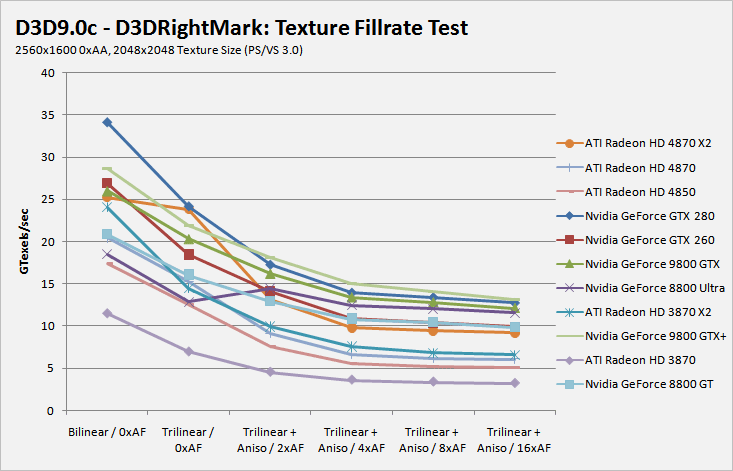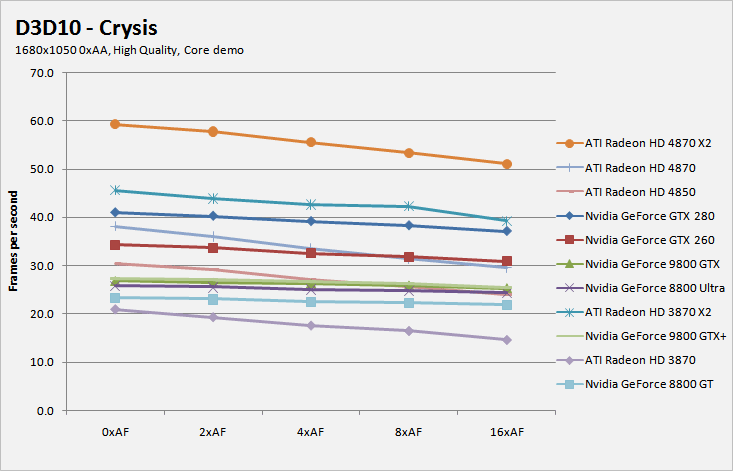Anisotropic Filtering Performance
Texture filtering quality hasn't moved on since the release of the Radeon HD 2900 XT, as AMD has continued to leave the previously optional 'High Quality AF' option enabled by default.We're happy to report that the filtering quality on Radeon HD 4800-series cards is identical to the Radeon HD 3870 and Radeon HD 2900 XT in the side-by-side tests we've done - there's no sign of any texture shimmering in all but a few extreme cases, and texture moire is also minimal as well.
Today's focus is on performance and we've run a number of tests to show how RV770's filtering hardware works when high anisotropic filtering samples are enabled. The first of those tests is D3D RightMark's built-in fillrate tester – we used this with varying AF levels to calculate the theoretical throughput.

We used eight textures to test anisotropic filtering performance in D3D RightMark and again there were a few surprises in this test. We found that texture fillrate dropped off much sharper on the higher end cards and the Radeon HD 4870 X2 ended up delivering lower performance than Nvidia's GeForce 9800 GTX once AF was applied.

Anisotropic filtering performance on the Radeon HD 4800 series cards in Crysis seems to fit in with where it should be, although the performance drops are sharper than they are on Nvidia's competing hardware.

MSI MPG Velox 100R Chassis Review
October 14 2021 | 15:04









Want to comment? Please log in.